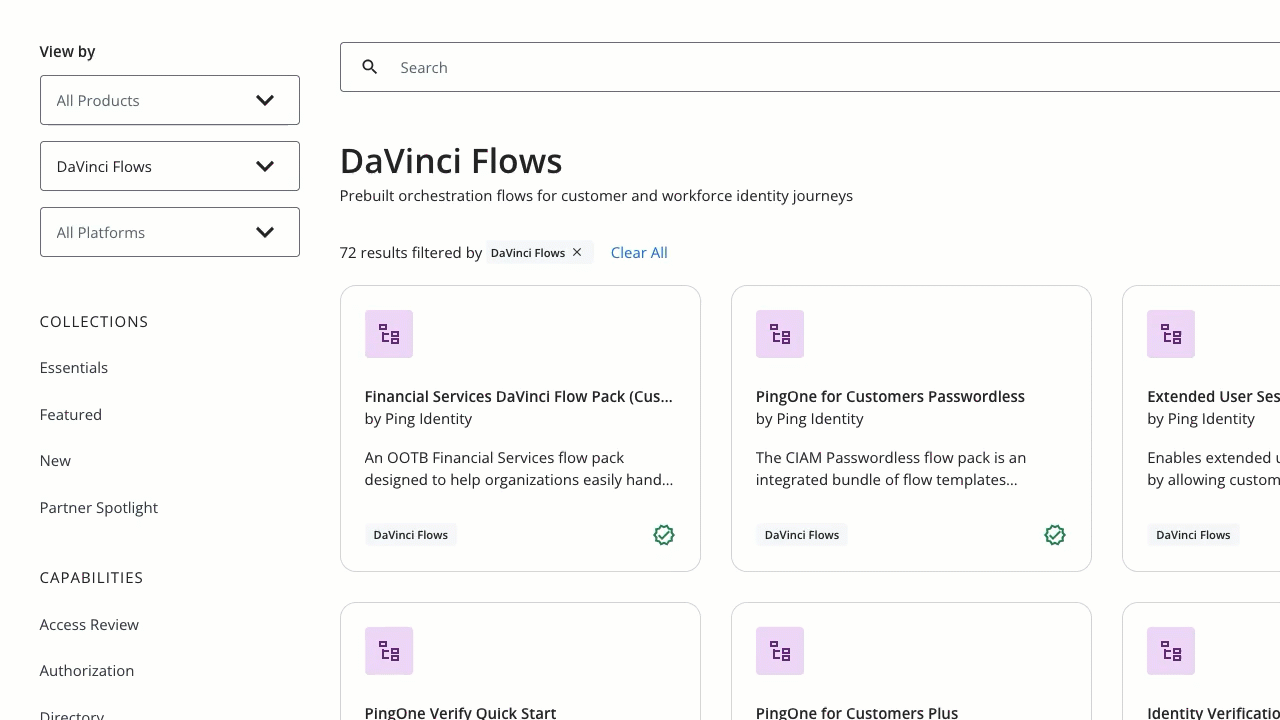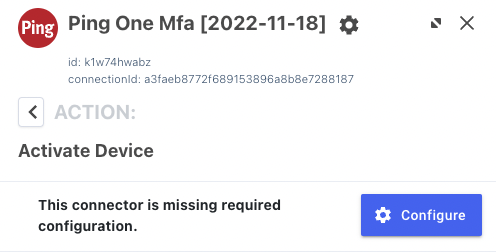Using DaVinci flow templates
DaVinci flow templates offer premade solutions for common orchestration use cases. You can modify them to meet your needs or use them as inspiration when designing your own flows.
Finding flow templates
The Ping Identity Marketplace allows you to use filters and search terms to find DaVinci flow templates for specific use cases. Click a listing to see more information about a flow template. You can also view these templates when you create a new flow using the Template Flow option.

Adding flows using flow templates
-
In DaVinci, on the Flows tab, click Add Flow.
-
Click Template Flow.
-
Find the template you want to use and click Use Template.
You can click Learn More to view additional information about the template.
-
Enter a name and description for your flow. Click Add.
Configuring new connectors
When DaVinci creates a new flow from a template, it uses your existing connectors. If you have multiple instances of a connector, DaVinci uses the oldest connector instance in the environment.
If the flow needs a connector that you haven’t created before, DaVinci automatically creates the connector instance and gives it a name, such as PingOne MFA [2022-12-20].
To use the flow, configure these new connectors. You can configure a connector by selecting it on the flow canvas and clicking Configure in the details pane.

For help with the connectors configuration, check the connector documentation. You can find links to the connector documentation in the Integration Directory listing where you downloaded the flow template.
Configuring variables for Ping-built flows
Ping Identity’s flows collect variables in a single node to make it easy to configure the flow.
To configure the variables, click the Variables node at the beginning of the flow.

Learn more about configuring specific variables in Common flow variables.
Integrating flows into your environment
After you finish configuring and testing your flow, you can integrate it into your organization’s test or production environment using the widget, redirect, or API method. Learn more in Integrating flows into your environment.